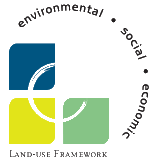Lower Athabasca Region covers an area from the south edge of the M.D. of Bonnyville to Alberta's northern border and includes Fort McMurray, Cold Lake and Lac La Biche. It has experienced rapid development, particularly during the past decade. The Lower Athabasca Region comprises a large section of northeastern Alberta, covering about 9,321,180 hectares.
Regional Plan (2012-2022) approved August 22, 2012
Lower Peace Region covers an area from the Alberta-British Columbia border to the west, includes Wood Buffalo National Park to the east, goes north to the Alberta-North West Territories border, and dips south of the Calling Lake Provincial Park to the south boundary of the M.D. of Opportunity. In total, the Lower Peace Region is 19,219,748 hectares, making it the largest of the seven regions.
Not started
North Saskatchewan Region is bordered by the Alberta-Saskatchewan border to the east, the Alberta-British Columbia border to the west; it peaks at the north boundary of Smoky Lake County and includes Banff National Park. It includes Edmonton and seven other cities. The North Saskatchewan Region is approximately 8,578,088 hectares, which makes it the third largest of the seven regions.
Phase one of the public consultations completed; see the Public and Stakeholder Consultations site to learn how you can get involved.
Red Deer Region is bordered by the Alberta-Saskatchewan border to the east, goes to the westerly edge of Mountain View County, south of Iddesleigh and to the most northerly boundary of Ponoka County. Red Deer is the region’s largest city. This region is about 5,033,751 hectares in total.
Not started
South Saskatchewan Region ranges from the Rocky Mountains to the west, the Canada-U.S. border to the south, the Alberta-Saskatchewan border to the east and north to the tip of the Municipal District of Bighorn. It is about 8,377,421 hectares, covering approximately 12.6 per cent of Alberta’s total land area and home to 44 per cent of Alberta’s population many of which live in the province’s largest city, Calgary.
Amended Regional Plan (2014-2024) approved January 20, 2017
Upper Athabasca Region ranges from the Alberta-British Columbia border to the west, moves east about two-thirds of the way across the centre of the province to the east boundary of the County of Athabasca, and includes Jasper National Park. This is the fifth largest of the seven regions, coming in at about 8,300,351 hectares.
Not started
Upper Peace Region is bordered by the Alberta-British Columbia border to the west, ranges east of Fox Creek to the boundary of the M.D. of Greenview, heads south to the Jasper National Park border and extends to the north boundary of Clear Hills County. The Upper Peace Region is approximately 7,427,032 hectares, making it the sixth largest of the seven regions.
Not started






